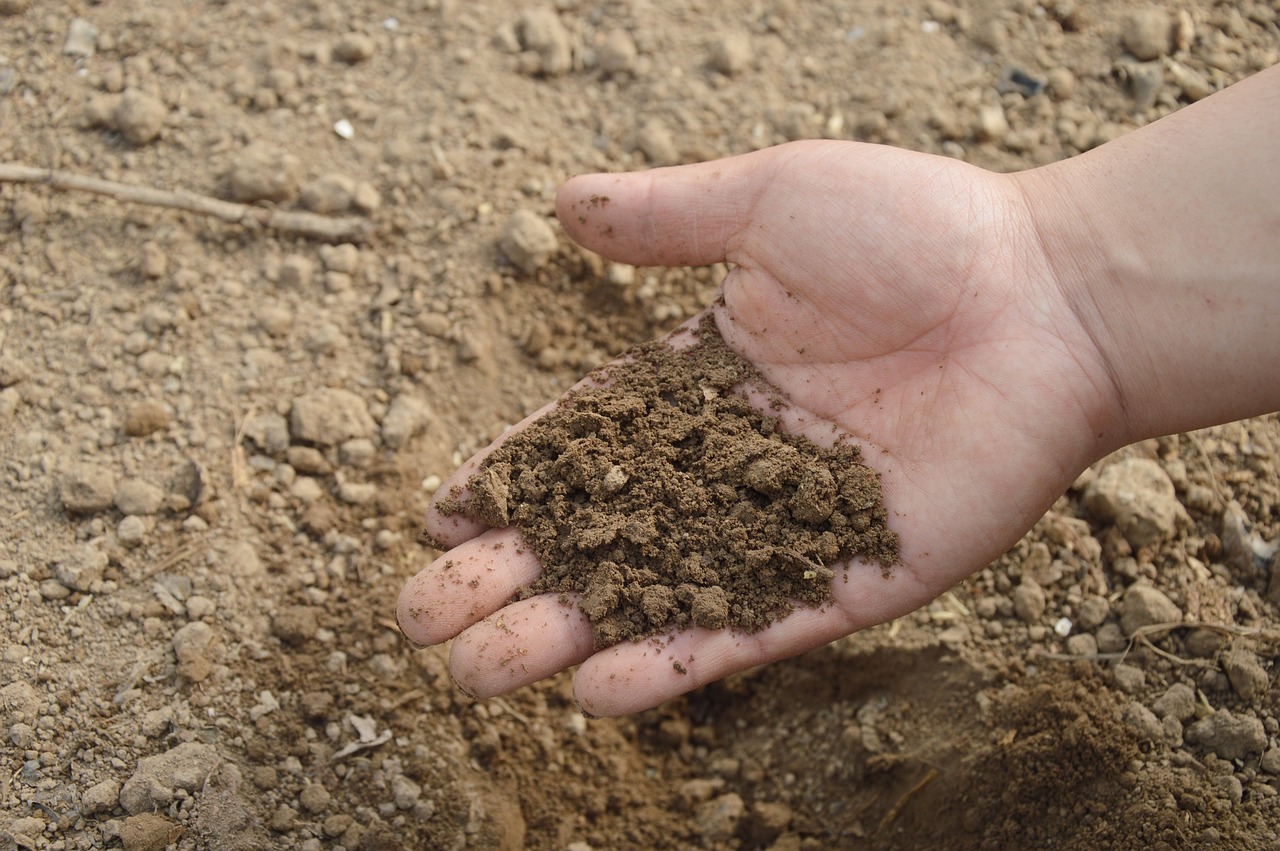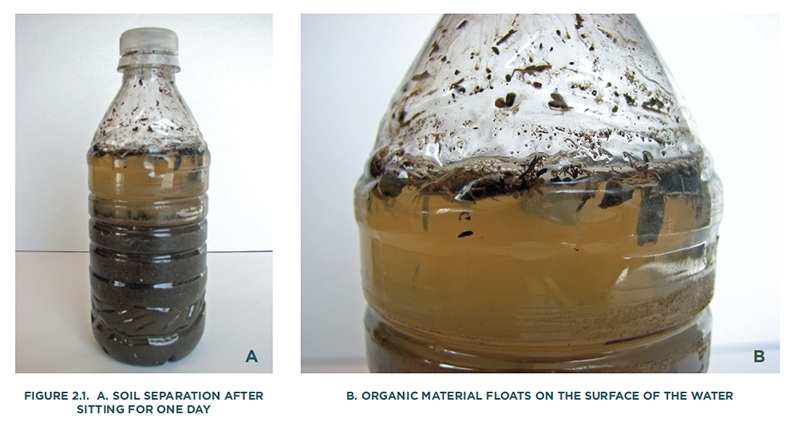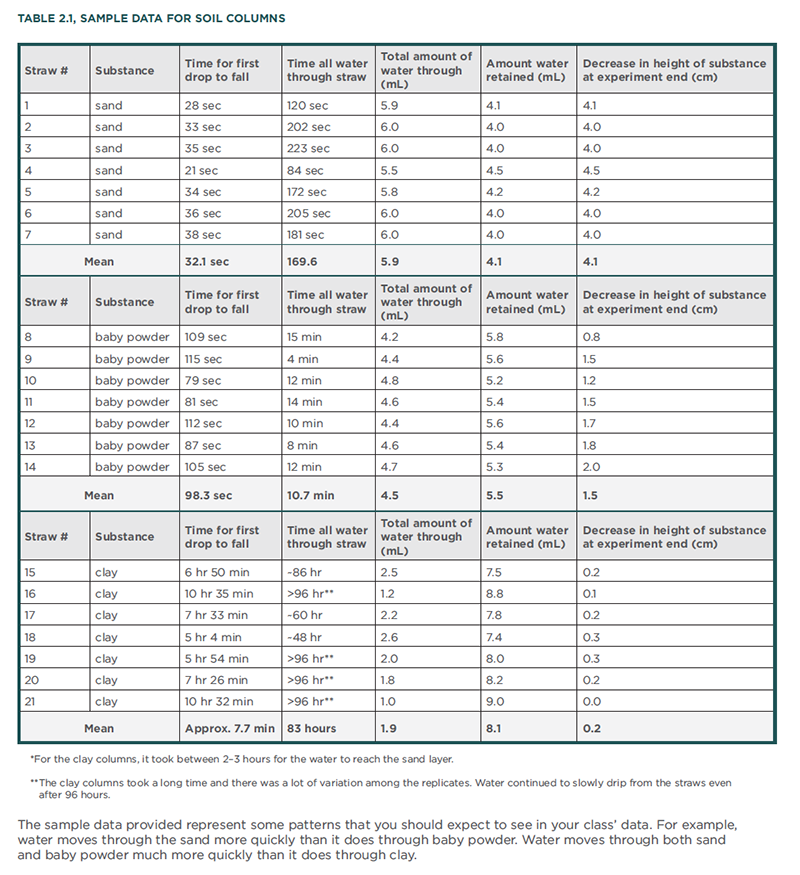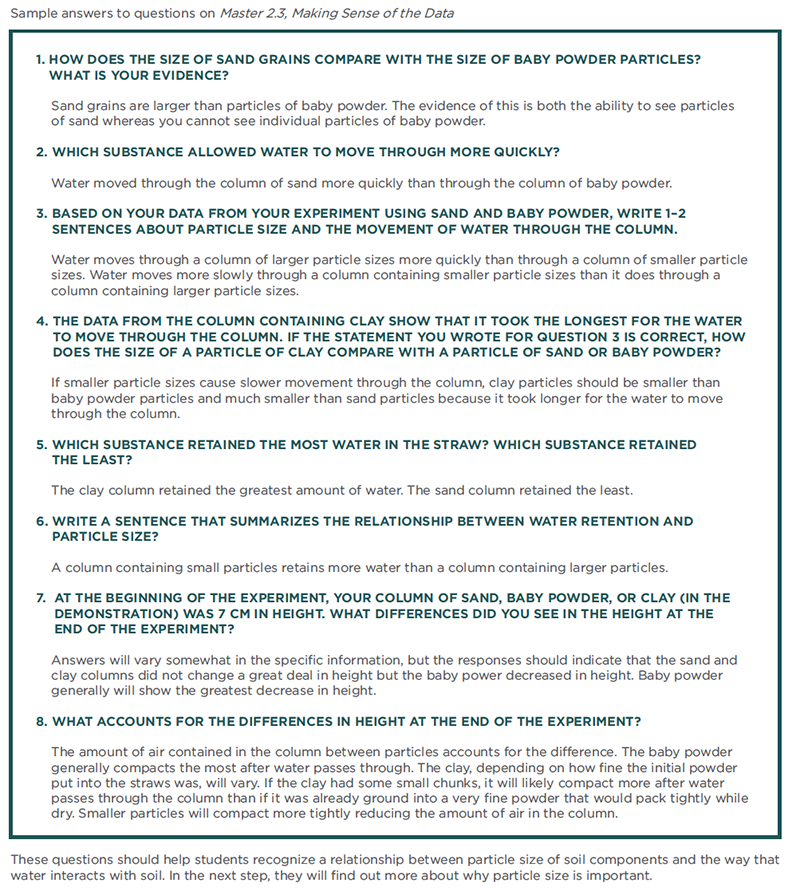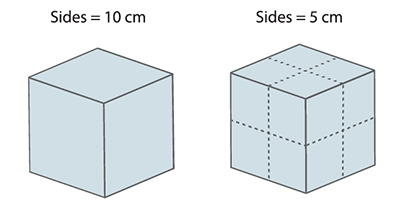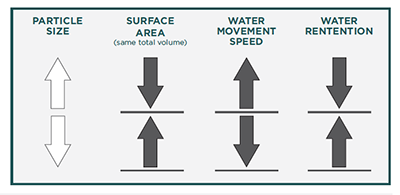Soil Formation
Most people take soil for granted. In fact, “soil” has a negative connotation. We call it dirt and wash it off our clothes and our bodies. In reality, soil is essential to our survival and that of nearly every organism on Earth. Our planet is mostly made of rock with an iron-nickel core. Plants and animals, including us, occupy a thin veneer on its surface. Our existence is possible because of a thin layer of soil that comes between the planet’s rocky interior and us.
Soils vary. They are natural expressions of the environment in which they form. Scientists recognize five main factors that influence soil formation: 1) parent material, 2) climate, 3) living organisms, 4) topography, and 5) time.
- Parent Material refers to both the organic and mineral material in which soil formation takes place. Mineral can include weathered rock, ash from volcanos, and sediments deposited by wind and water. Soil formation will happen more quickly in materials that are more permeable to water.
- Climate influences the amount of water available for weathering the parent material and the temperature at which it occurs. A warm, moist climate fosters plant growth and speeds up decomposition, both of which contribute to faster soil formation.
- Living Organisms. Plants supply soil with organic material and help prevent erosion. Deep-rooted plants have a greater impact on soil formation than shallow-rooted plants because they create larger channels for water movement. Insects, earthworms, fungi, and bacteria are important because they help decompose organic material releasing plant nutrients.
- Topography. The three dimensional shape of the land influences water movement and therefore the speed of soil formation. Since water flows downward due to gravity, soils on slopes are prone to erosion. Areas that are very wet or very dry may not be fertile and the resulting lack of plant growth can slow the rate of soil formation.
- Time. The weathering of rock slowly produces soils. Constant exposure to wind and rain cause the rocky crust to break slowly down into smaller particles. It can take centuries to produce fertile topsoil. As rainwater seeps into cracks, temperature extremes cause the water to freeze. The rock expands, contracts, and fractures. Organisms that live on and in the soil help these weathering actions along.
Of course, in addition to these five factors, human activity also can influence soil formation. Agricultural practices and urban development especially can interfere with the naturally occurring process of soil formation.
Soil Horizons
The gradual process of soil formation produces a series of horizontal layers. A soil horizon is a layer generally parallel to the soil surface, whose physical and chemical characteristics differ from the layers above and beneath. A given type of soil usually has three or four horizons. Horizons are characterized by the obvious physical characteristics of color and texture. The formation of soil horizons is influenced by factors such as air, water, sunlight, and plant material. The weathering of the parent material occurs first at the surface and then works its way downward. This means that the uppermost layers are changed (weathered) the most, while the deepest layers are the most similar to the original parent material.
To visualize the soil horizons, scientists dig a hole several meters deep to expose the layers. Most soils display a similar pattern of horizons. Each horizon is labeled with its own capital letter that identifies its place. A typical soil horizon sequence is described as O-A-B-C-R.
- O refers to organic matter that is relatively undecomposed and lies on the surface.
- A refers to organic material mixed with mineral that makes up the surface soil.
- B refers to the subsoil. This layer reflects the chemical and physical alteration of the original parent material.
- C refers to the parent material
- R refers to the bedrock. The R layer is mostly composed of hard rock that cannot be excavated by hand.
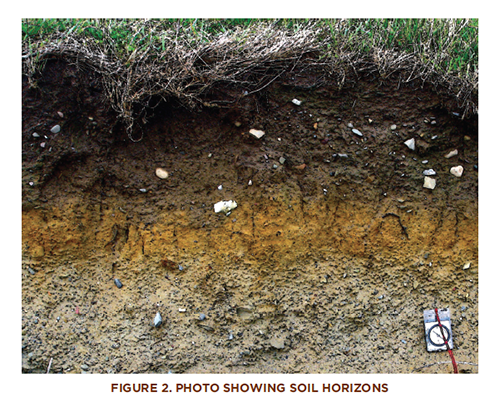
Soil Triangle
During soil formation, inorganic material is broken down by weathering into particles of various sizes. Soil texture refers to the relative proportions of different-sized particles found in the soil. Scientists classify soil particles into three categories. The smallest particles, which measure less than 0.002 millimeters, are called clay. Clay is important in holding nutrients. Clay particles form plate-like structures that attract and hold nutrients through chemical bonds. These nutrients can be displaced off the clay by another nutrient, absorbed by a plant root or soil microbe, or chemically absorbed into the clay particle itself. The next-largest particles are called silt. Silt particles range in size from 0.002 millimeters to 0.06 millimeters. Sand refers to the largest particles. Sand grains range in size from 0.06 millimeters to 2 millimeters. Soils vary in their proportions of clay, silt, and sand. Soil scientists classify different soil types using the soil triangle. Each side of the soil triangle represents the amount of a particle of a certain size—clay, silt, or sand. The relative amounts of these three soil components intersect within the triangle and determine to what type of soil those proportions correspond.
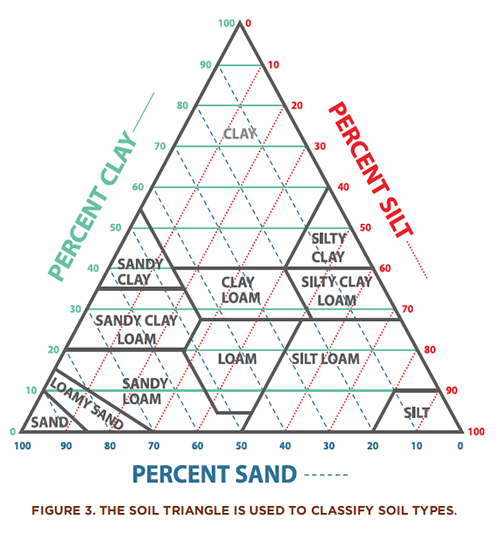
The ability of a soil to accept and retain water is largely determined by the relative amounts of clay, silt, and sand present. Porosity refers to spaces in the soil that can hold either air or water. Permeability is defined as the rate at which water can travel through soil. Table 10 lists properties of particle size that relate to soils’ interactions with water. Soils with desirable properties for farming are called loams. Loamy soils typically contain about 50 percent air space, which allows root systems to “breathe” (i.e., obtain O2 for respiration). The solid half of loamy soils is about 90 percent minerals and 10 percent organic material. Usually, loamy soils have names that more accurately reflect their composition, such as clay loam or silt loam.

Although the organic fraction of most soils is small in volume compared to the mineral fraction, it plays an important role in supporting plant growth. The organic material is composed of living organisms, plant roots, and plant and animal residue. A single gram of healthy topsoil may contain 100 nematodes (small roundworms), 1 million fungi, and 1 billion bacteria. Earthworms and a wide variety of insects may be present in smaller numbers. Organic material contains a significant amount of nutrients, and it, together with plant roots, helps
- decrease erosion;
- increase water infiltration and storage;
- act as a pH buffer (to maintain an acid-base balance);
- decompose organic material, releasing nutrients;
- recycle carbon, nitrogen, and other nutrients; and
- retain available nutrients such as metal ions.
The soil is a “bank” for nutrients that are taken up by plants, and these nutrients must be replenished for continued plant growth. Before the advent of modern agriculture, farmers relied solely upon tillage to break down existing organic material and release existing soil nutrients. This practice is still used in many less-developed countries.
